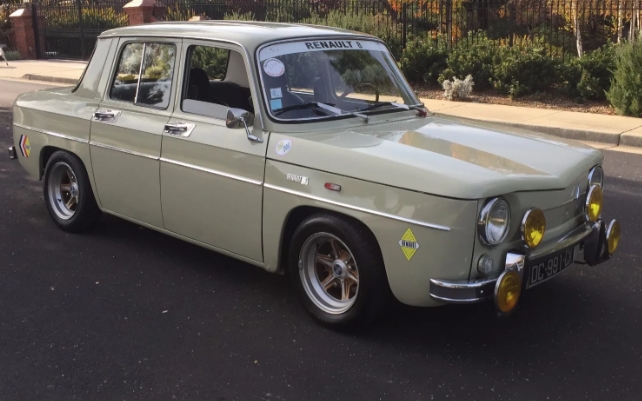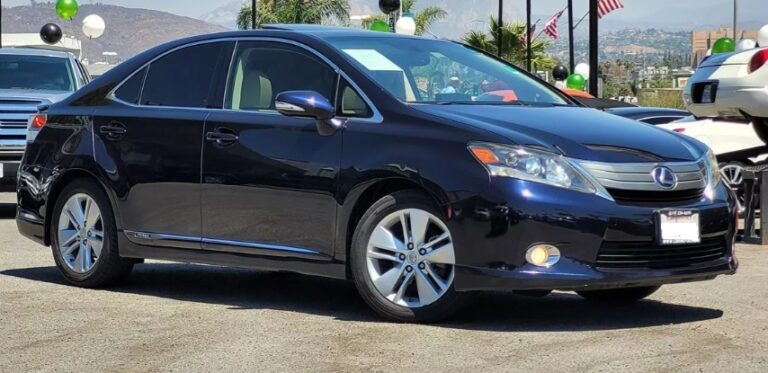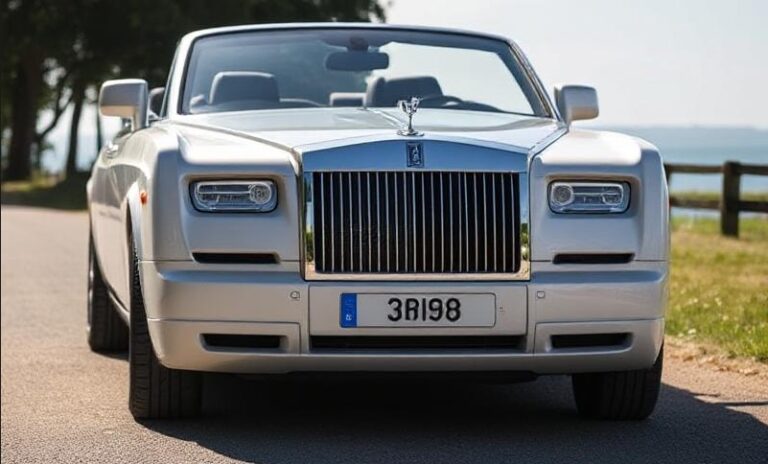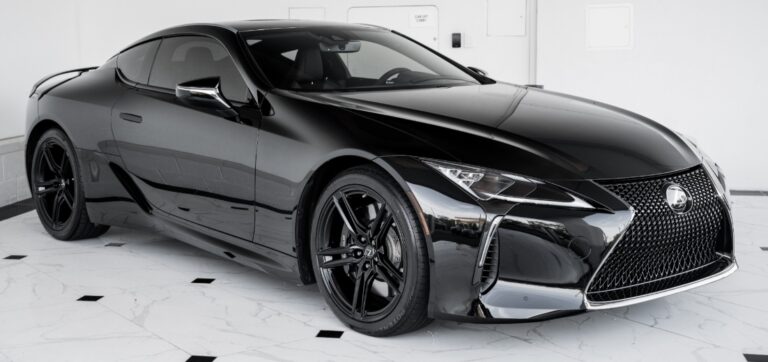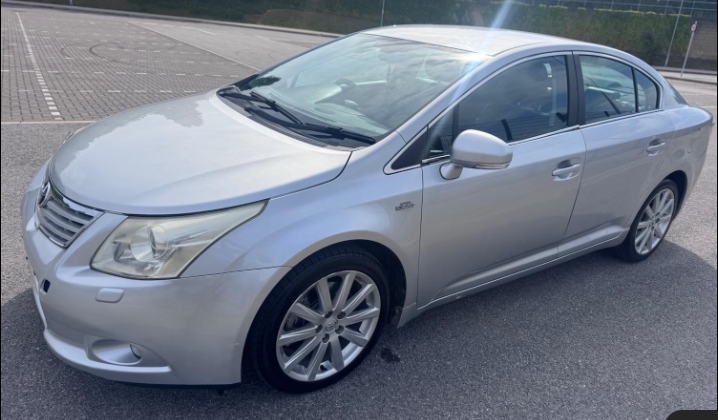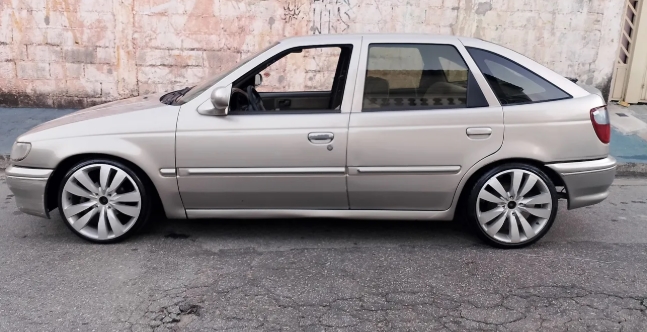Boxy but Brilliant: The Complete Evolution of the Renault 8
In the annals of automotive history, few cars so perfectly encapsulate the transition from sensible family transport to motorsport legend as the Renault 8. Born in the optimism of the early 1960s, it was a car that defied convention from its inception. With its sharp, three-box design standing in stark contrast to the curvaceous forms of its predecessors, and its pioneering use of four-wheel disc brakes, the R8 was a statement of intent from the French industrial giant. Over its remarkable production run, it would evolve from a humble saloon into a fire-breathing rally icon, forever cementing its place in the hearts of enthusiasts worldwide. This is the story of its evolution, a journey from pragmatic innovation to pure performance.
The Genesis: A New Direction (1962-1964)
The Renault 8’s story begins with the need to replace the aging, albeit hugely successful, Renault Dauphine. While the Dauphine had mobilised a generation of post-war French families, its rear-engine, swing-axle design was showing its age by the early 1960s. Renault’s response, internally designated “Project 113,” was a radical rethink in design philosophy.
Led by designer Philippe Charbonneaux, the team abandoned organic curves for a functional, almost austere, three-box shape. This angular design was not merely a stylistic choice; it was a masterclass in packaging efficiency. The flat panels and upright glasshouse created a surprisingly spacious interior and excellent visibility within a compact footprint. This design language would prove highly influential, setting a trend for small saloons for years to come.
Renault 8 (R1130) – Launched June 1962
The first model to roll off the production lines at the Flins-sur-Seine plant was simply known as the Renault 8. It was powered by an all-new 956cc four-cylinder engine. Known as the “Sierra” or “Cléon-Fonte” engine, this water-cooled, five-bearing crankshaft unit was a marvel of durability and tunability—a quality that would become critically important later in the car’s life. Initially, it produced a modest 44 horsepower, channelled to the rear wheels via a four-speed manual gearbox, which, in a carryover from earlier models, featured synchromesh on the top three gears only.
However, the car’s true bombshell feature was its braking system. The Renault 8 was the first car in its class, and one of the first mass-produced cars in the world, to feature four-wheel disc brakes as standard. At a time when drum brakes were the norm even on more expensive vehicles, this was a revolutionary leap in safety and performance, giving the lightweight saloon extraordinary stopping power for its day.
Initial reception was strong. The public appreciated the modern styling, the bright and airy cabin, and the confidence-inspiring brakes. It was a thoroughly modern and competent family car, but Renault knew it had the potential for much more.
Broadening the Appeal: The Major and the Gordini (1964-1966)
By 1964, Renault sought to expand the R8’s market reach, creating distinct models for both the comfort-oriented buyer and the burgeoning performance enthusiast.
Renault 8 Major (R1132) – Introduced 1964
The Major was the R8’s first significant mechanical upgrade. The 956cc engine was bored out to 1108cc, increasing power to a more comfortable 50 horsepower. This larger engine was not only more powerful but also smoother and more flexible. Crucially, it was paired with a new, all-synchromesh four-speed gearbox, eliminating the need for double-clutching into first gear and making city driving far more pleasant. The Major also received an upgraded interior trim level, featuring plusher seats, full wheel covers, and additional chrome trim, positioning it as the more luxurious offering in the range.
Renault 8 Gordini (R1134) – Unveiled October 1964
While the Major catered to comfort, the other 1964 debut would create a legend. Renault turned to Amédée Gordini, the famed French-Italian engine tuner known as “Le Sorcier” (The Sorcerer), to transform the humble saloon into a performance machine. The result was the Renault 8 Gordini, a car that would dominate rally stages and racetracks for years.
Finished exclusively in “Bleu de France” with two offset white stripes, the Gordini was an icon from birth. Gordini took the 1108cc engine from the Major and performed his magic. He fitted a new crossflow cylinder head, a more aggressive camshaft, and two twin-choke Solex carburettors, nearly doubling the output to 90 horsepower.
The transformation was comprehensive. The suspension was lowered and stiffened, the steering was made quicker, and the braking system was upgraded with a servo for enhanced performance. Inside, a sports steering wheel and a full set of Jaeger instruments, including a tachometer, replaced the standard fare. The R1134 Gordini was a revelation—a “giant-killer” that could harass far more powerful and expensive sports cars, all while having room for four people. Its light weight, agile handling, and high-revving engine made it an instant hero in the motorsport world.
Mid-Life Refinements and New Technology (1965-1968)
The mid-1960s saw Renault continue to refine the R8 platform, introducing both technological innovations and a crucial new sporting model.
Renault 8 Automatic – Introduced 1965
In a bold move for the small car market, Renault introduced a version with a sophisticated automatic transmission in 1965. Co-developed with Jaeger, it was not a conventional torque-converter automatic but a three-speed unit operated by a system of electromagnets and a powder-based magnetic clutch. The driver selected gears via a series of dashboard-mounted push-buttons (R, N, D, 1, 2). While technologically fascinating, it was complex and expensive, and its sluggish performance blunted the R8’s zesty character. It was initially paired with the 956cc engine and later with the 1108cc unit, but it remained a niche seller throughout its life.
Renault 8 Gordini 1300 (R1135) – Introduced 1966
As competition heated up, the original Gordini needed more firepower. For the 1967 model year, Renault launched the ultimate evolution: the R8 Gordini 1300. The engine was a new 1255cc unit, now breathing through two massive twin-choke Weber 40 DCOE carburettors. Power climbed to over 100 horsepower, a phenomenal figure for a 1.3-litre engine at the time.
To handle the extra performance, the R1135 was fitted with a five-speed, all-synchromesh manual gearbox, a feature reserved for exotic sports cars. Its most defining visual cue was the new four-headlamp front end, which gave the car a far more aggressive look. A larger, 38-litre fuel tank was fitted in the front luggage compartment to give it greater range in rallies, supplemented by an optional secondary tank. This model cemented the Gordini legend, winning prestigious events like the Tour de Corse and dominating the popular Gordini Cup one-make racing series, which became a vital training ground for a generation of French racing drivers.
The Final Flourish: The Renault 8 S (1968-1971)
With the top-tier Gordini being a focused and relatively expensive machine, Renault identified a gap in the market for a “warm” version—a car with sporty looks and enhanced performance that was more accessible than the full-blown competition model.
Renault 8 S (R1136) – Introduced 1968
The Renault 8 S (Sport) was the perfect compromise. Visually, it was a near-clone of the Gordini 1300, inheriting its signature quad-headlight setup. It was most famously offered in a vibrant, solid yellow, making it instantly recognizable.
Under the rear engine cover, it used the robust 1108cc engine block but was fitted with a high-performance Weber twin-choke downdraft carburettor and a revised camshaft, boosting power to a respectable 60 horsepower. This placed it neatly between the 8 Major and the Gordini. It also received bucket seats, a tachometer, and servo-assisted disc brakes, delivering a genuinely sporty driving experience without the high-strung nature or maintenance demands of the Gordini. The R8 S was a huge success, offering a taste of the Gordini dream to a much wider audience.
.
NO MORE dead batteries with this:

.
The Twilight Years and Global Legacy (1969-1976)
By the late 1960s, the automotive landscape was shifting. Front-engine, front-wheel-drive designs, like Renault’s own revolutionary R16, were proving to be the future. The launch of the Renault 12 in 1969 signalled the beginning of the end for the rear-engined R8 family in its home market.
Production of the Gordini and S models ceased in France around 1970 and 1971, respectively. The base Renault 8 (now with the 1108cc engine and renamed simply “Renault 8”) and the Major continued, receiving minor trim updates until French production finally ceased in 1973.
However, the R8’s story didn’t end there. Its robust simplicity made it ideal for licensed production around the world. In Spain, FASA-Renault continued building the R8 until 1976. In Romania, a licensed version of the R8 became the very first car produced by Dacia, known as the Dacia 1100, from 1968 to 1972. It was also assembled in countries as diverse as Australia, Mexico, Venezuela, and South Africa, a testament to its global appeal.
In just over a decade, the Renault 8 had transformed from a sensible, innovative saloon into a diverse family of cars that catered to every need, from automatic city driving to full-bore international rallying. It pioneered safety features, launched a motorsport dynasty, and provided reliable transport for millions. The little boxy saloon that could, the Renault 8 remains a shining example of brilliant engineering, clever evolution, and the enduring magic of the Gordini name.
